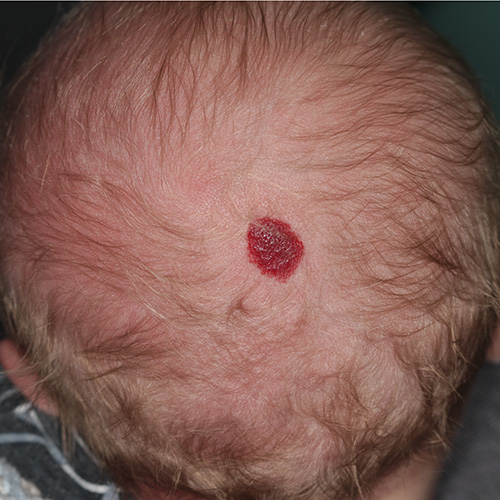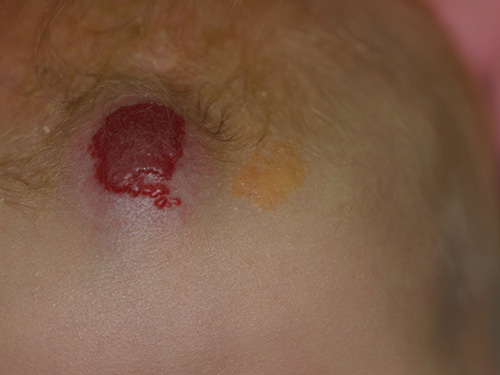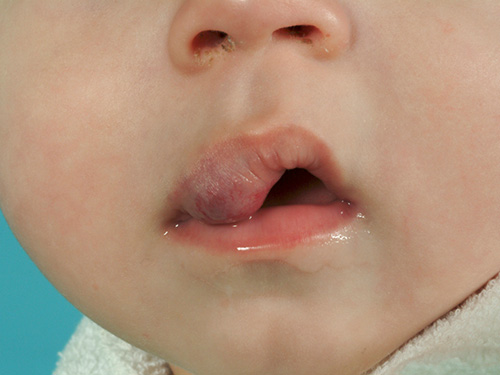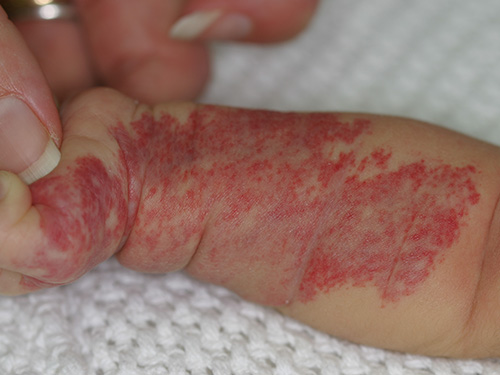Presentation
Infantile haemangioma (also known as strawberry naevus) is a common benign vascular tumour that affects up to 10% of neonates. It is more common in females and in premature infants. The lesion may be present at birth, or appear within the first month of life. It may initially present as a faint pink or red patch on the skin, often mistaken for a scratch. The mark may then grow and evolve into the more typical prominent red lump.
Infantile haemangiomas can be superficial, deep, or mixed (have both a surface and deep part)The Royal Children's Hospital (RCH) Melbourne, 2018. A superficial infantile haemangioma typically has a sharp border, and is a round or oval lump with a smooth or slightly bumpy surface. It tends to be soft, slightly raised or domed, with an intense bright red colour (giving it a strawberry-like appearance). A deep infantile haemangioma develops under the skin and may appear as a slow-growing skin-coloured or slightly blue lump. See here for photos of infantile haemangioma.
The majority of infantile haemangiomas reach their final size when the child reaches 3 months of ageLeaute-Labreze, 2017, but some may continue to grow until the child is 5 to 9 months old. The lesion then enters a slow involution phase (shrinking phase), which can take several years. After shrinking, larger lesions often leave excess skin, textural change and telangiectasia (visible small linear red blood vessels near the surface of the skin).




